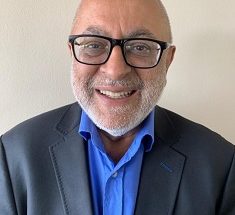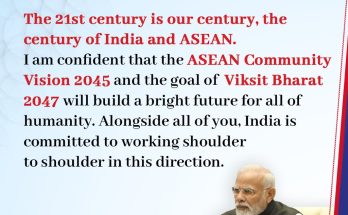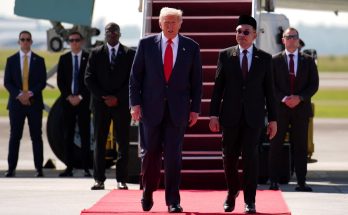A s the Indian general election begins, there are fears that Maoist insurgents might attempt to disrupt the polls in areas where they hold sway. Their threats have already prevented political parties from campaigning in these areas. The Maoist ambush in the Sukma district of Chattisgarh last month, which killed 16 Central Reserve Police Force (CRPF) personnel, indicates again that Indian security forces are yet to learn how to fight this scourge effectively. Temporary setbacks are inevitable in any war, but this is not as much a temporary setback as an illustration of continuing malaise in Indian security operations. Indeed, it represents a larger failure of Indian counter-insurgency approach itself.
s the Indian general election begins, there are fears that Maoist insurgents might attempt to disrupt the polls in areas where they hold sway. Their threats have already prevented political parties from campaigning in these areas. The Maoist ambush in the Sukma district of Chattisgarh last month, which killed 16 Central Reserve Police Force (CRPF) personnel, indicates again that Indian security forces are yet to learn how to fight this scourge effectively. Temporary setbacks are inevitable in any war, but this is not as much a temporary setback as an illustration of continuing malaise in Indian security operations. Indeed, it represents a larger failure of Indian counter-insurgency approach itself.
A recent book by Lt. Gen. Rostum K. Nanavatty, Internal Armed Conflict in India: Forging a Joint Civil-Military Approach outlines much that is wrong with the current Indian approach and what might be done to rectify some of the difficulties. General Nanavatty has had extensive counter-insurgency experience in almost all the counterinsurgency sectors that the Indian army has fought in, from Sri Lanka in the late 1980s to the Indian northeast and Kashmir and much of his experience has been distilled into this book. Indeed, this experience is now an indicator of how much counterinsurgency fighting the Indian army has been engaged in because it is difficult now to come across officers who do not have any counter-insurgency experience. When almost all the fighting that the Army does is in counter-insurgency, it raises fundamental questions about not just the Army and the security forces but much more so, of the sad state of this republic.
One of the main problems is the political and administrative incompetence that leads to insurgencies in the first place. But while this is a valid argument, it should not become a justification for insurgency, especially of the Maoists. We should dismiss with the contempt it deserves the arguments of Maoist sympathisers about this being some kind of romantic and legitimate tribal response to oppression.
 Six decades after independence, India’s tribal population and other disadvantaged groups have not seen any great benefits of economic development and administrative and political inadequacies are the culprit. For the Maoists and their over-ground sympathisers, though, the condition of the masses is simply an excuse for their political struggle to overthrow the Indian state, which is why they oppose any development including roads and schools. But what the Maoists offer is an anachronistic and discredited model of development, a path that leads to totalitarianism and mass murder rather than emancipation. One only has to look at the example of Mao himself or for that matter the murderous Khmer Rouge in Cambodia, the ideological cousins of the Indian Maoists, to know what kind of developmental solution the Maoists offer.
Six decades after independence, India’s tribal population and other disadvantaged groups have not seen any great benefits of economic development and administrative and political inadequacies are the culprit. For the Maoists and their over-ground sympathisers, though, the condition of the masses is simply an excuse for their political struggle to overthrow the Indian state, which is why they oppose any development including roads and schools. But what the Maoists offer is an anachronistic and discredited model of development, a path that leads to totalitarianism and mass murder rather than emancipation. One only has to look at the example of Mao himself or for that matter the murderous Khmer Rouge in Cambodia, the ideological cousins of the Indian Maoists, to know what kind of developmental solution the Maoists offer.
General Nanavatty calls for a ‘whole of government’ approach to counter-insurgency that recognises the political nature of insurgencies and involves both the security forces and the political establishment in fighting insurgencies. A key consideration that he points to is the need to ensure that there is no external support to domestic insurgencies. This can be done through diplomatic and other measures but a military option has to be a possibility. There are obviously dangers in such an approach, especially since in the case of external support to Indian domestic insurgencies, we are obviously discussing Pakistan, a country which has nuclear weapons. Thus any military effort has to be carefully calibrated to ensure that there is no escalation. But Nanavatty is less enthusiastic about tit-for-tat response of supporting insurgencies in other countries, despite the fact that India has in the past used such tactics in both the Bangladesh liberation struggle and in Sri Lanka in the 1980s. Considering the consequences in Sri Lanka in particular – which include the assassination of a former Prime Minister of India – the caution may be justified. Nevertheless, there needs to be greater consideration of this and other punitive measures in tackling foreign support of insurgencies within India.
There is also need to improve the state of the state police forces and the central police forces such as the Central Reserve Police Force (CRPF) and others. While the state police forces have to take the lead in many instances in fighting insurgencies, it is also true that in many cases, the state police forces are simply in no condition to contain the insurgency threat. Indeed, the need to bring in central forces, including the Army, is a consequence of the failure of the state police. Nevertheless, the state police forces still need to remain at the forefront of the fight and they should be involved in building the peace later because they are ones who are in direct contact on the ground.
General Nanavatty also has some radical suggestions including the bifurcation of the Ministry of Home Affairs into two, with one dedicated to internal security issues. Considering that even the Prime Minister has declared that Maoists are the “gravest internal security challenge” India faces, these are suggestions that need to be considered with seriousness. His other important suggestion is the creation of a dedicated counterinsurgency force, for which he suggests the conversion of the Assam Rifles into an internal security force. This would relieve the Army of the onerous task of fighting in domestic insurgencies while creating a force that would be more capable than the current state or central forces.
One problem is that creating such a large and dedicated force requires us to accept that we are not going to win the war against domestic insurgencies any time soon. There has been an internal disagreement within the Army about the Rashtriya Rifles, the Army’s counterinsurgency force. Clearly, General Nanavatty is of the opinion like many in the Army that this is a task that the Army should not handle. Unfortunately, outside the Army, there is little understanding of how little enthusiasm there is in the Army for fighting these wars.
Ultimately, the Indian tendency to muddle through is likely to continue when it comes to counter-insurgency. The distance between the Army and its civilian masters is so gaping that advice, however enriched by experience and reflection, is likely to fall on deaf ears.
(Dr. Rajesh Rajagopalan is professor at the School of International Studies, Jawaharlal Nehru University, Delhi)
Courtesy: ORF
Author Profile
- India Writes Network (www.indiawrites.org) is an emerging think tank and a media-publishing company focused on international affairs & the India Story. Centre for Global India Insights is the research arm of India Writes Network. To subscribe to India and the World, write to editor@indiawrites.org. A venture of TGII Media Private Limited, a leading media, publishing and consultancy company, IWN has carved a niche for balanced and exhaustive reporting and analysis of international affairs. Eminent personalities, politicians, diplomats, authors, strategy gurus and news-makers have contributed to India Writes Network, as also “India and the World,” a magazine focused on global affairs.
Latest entries
 India and the WorldNovember 26, 2025G20@20: Africa’s Moment – The Once and Future World Order
India and the WorldNovember 26, 2025G20@20: Africa’s Moment – The Once and Future World Order DiplomacyOctober 4, 2025UNGA Resolution 2758 Must Not Be Distorted, One-China Principle Brooks No Challenge
DiplomacyOctober 4, 2025UNGA Resolution 2758 Must Not Be Distorted, One-China Principle Brooks No Challenge India and the WorldJuly 26, 2025MPs, diplomats laud Operation Sindoor, call for national unity to combat Pakistan-sponsored terror
India and the WorldJuly 26, 2025MPs, diplomats laud Operation Sindoor, call for national unity to combat Pakistan-sponsored terror India and the WorldJuly 25, 2025When Fire Ends, Diplomacy Begins
India and the WorldJuly 25, 2025When Fire Ends, Diplomacy Begins







